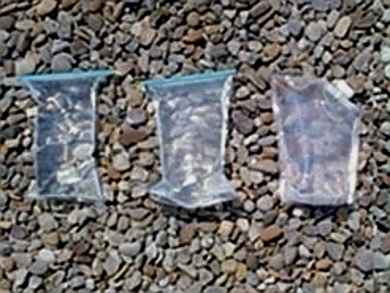Water contamination and lack of water supply affect more than 700 million people worldwide who do not have access to safe drinking water. As a result, 2.2 million people die each year due to infant diarrhea and other water-borne diseases such as hepatitis, typhoid, and cholera.
A possible solution to this problem may lie in a method called “solar water disinfection” (SODIS). With this method, common transparent plastic bottles are filled with water and exposed to the sunlight for at least 6 hours. Ultraviolet (UV) radiation efficiently inactivates a wide range of pathogens present in water. This method has been investigated for more than 20 years, proving its capacity for water disinfection. However, the lack of access to plastic bottles in many regions of the world and the difficulties associated with their transportation are factors that limit the application of SODIS.
Sergio Gutierrez-Alfaro, University of Cadiz, Spain, and colleagues, have introduced polyethylene (PE) bags, replacing the bottles commonly used in the SODIS process. The PE bag can not only reduce the space occupied during transport and distribution, but could also improve the efficiency of the disinfection process. This could increase the adoption rate of the SODIS method among target populations.
The group examined if PE bags meet the technical requirements (effective disinfection, safe storage, high stress resistance) and practical issues (easy to fill, store, and drain). Bags of different materials, shapes, and volume were tested for solar disinfection of commercial strains of Escherichia coli and Enterococcus spp. Materials used were food-grade polyethylene (PE), bio-oriented polypropylene (PPO), polyamide (PA), and polyethylene terephthalate (PET). Polyethylene bags were the fastest to inactivate the bacteria. All tested bags performed better than the PET bottles used in the conventional SODIS method.
- Accelerating the process of solar disinfection (SODIS) by using polymer bags,
Sergio Gutiérrez-Alfaro, Asunción Acevedo, Manuel Figueredo, Matthias Saladin, Manuel A. Manzano,
J. Chem. Technol. Biotechnol. 2016.
DOI: 10.1002/jctb.5005




